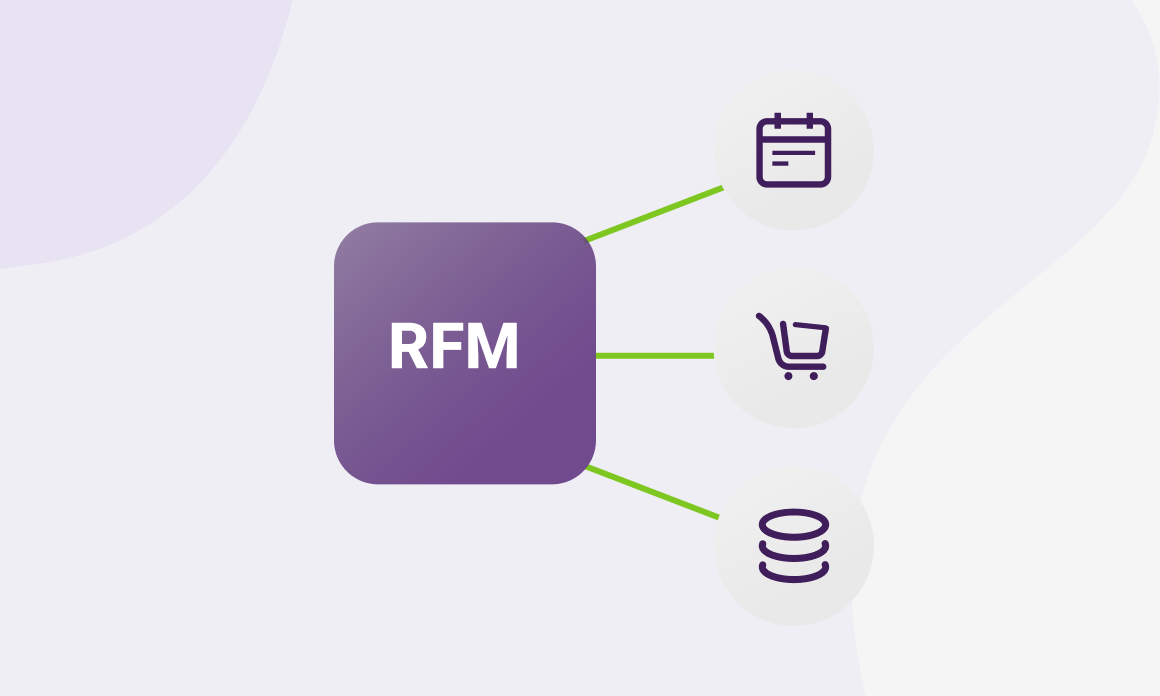How to improve customer loyalty with the new gold standard of RFM segmentation?

Not all customers are the same and a smart marketer knows this. Some customers have only bought from you once; some buy from you every other week.
A customer's past interaction with your business dictates how you can interact with them going forward, and how you will turn them into repeat customers and increase their lifetime value.
Based on a customer's past interaction with your business, you can group them into segments and the RFM segmentation is an effective way of doing so.
However, the traditional method of RFM Segmentation has its shortcomings. It has limited predictive power and does not take into account the changes in customers' preferences over time.
The MagicBean RFM app sets the new gold standard for RFM segmentation by offering detailed insights into segment transition, customer journeys from one segment to another, and champion prediction.
In this blog post, you will learn about RFM Segmentation, its significance in e-commerce marketing, how to carry out RFM segmentation, and how the MagicBean RFM app sets the new gold standard for RFM segmentation in 2023.
What does RFM Segmentation Entail?
RFM stands for Recency, Frequency, and Monetary value. RFM Segmentation involves grouping your customers into segments based on these three factors.

1. Recency
How long was the customer's last interaction with your business? Recency can be measured differently: the last time a customer purchased an item from you or the previous interaction with your app or website.
Additionally, recency varies from brand to brand. The number of days considered for recency in fashion retail can differ from that of gadgets. Recency can be measured in days, weeks, or months depending on the product you sell.
For customers who have interacted with your brand recently, you are still on top of their minds, and they are more open to updates and information from you than those who have not interacted with your business in a while.
2. Frequency
How often does a customer buy from you? Here you can segment your customers based on how often they buy from you. As recency varies from business to business, frequency also changes.
The frequency of products that can only be used once and requires repeated usage will differ from the one that lasts longer and can be used repeatedly.
An example of this is clothing and consumables. Clothing lasts longer while consumables require more frequent purchase.
3. Monetary Value
How much does a customer spend on a transaction on average? A customer who spent $3000 on 2 items is in a different segment than one who spent $1000 on 10 items.
To get the best from each customer, your marketing messages should be crafted with this information in mind.
The RFM Segmentation is a suitable segmentation method because the three factors it utilizes are the most critical in e-commerce.
Based on these factors, the RFM analysis has six segments that are essential in e-commerce marketing:
- Champions: This is the best customer segment with customers that buy the most recently, buy frequently, and spend the most.
- Loyals: This segment consists of customers who buy the most often from the store but do not spend as much and are not as recent as the champions
- Potentials: These are a group of customers that do not spend as much or as often as the locals. However, they do patronize the store regularly. These sets of customers can be nurtured to transition into better segments with marketing strategies.
- At Risks: These customers have not interacted with the store in a long while. If not nurtured on time, they may churn.
- Lost: These customers have yet to interact with your business within a stipulated long period.
- New: These customers are the ones that made their first purchase recently.
Below is a diagram illustrating these categories.

Significance of RFM Segmentation in E-commerce Marketing
- Effective brand communication: As a marketer, the messages you send to loyal customers should differ from those you send to first-time customers. This also applies to other factors, such as monetary value. RFM segmentation enables effective brand communication When you segment your customers appropriately, you can craft your messages to suit each segment, getting you the best from your marketing efforts.
- Segment Transition: Segmentation helps you categorize customers based on their interaction with your business. Hence, you can implement effective marketing strategies to move customers from one segment to the other. For example, high-risk customers in e-commerce are on the verge of churn. Segmentation helps you identify such customers, enabling you to draft a retention strategy and directing it at them, and helping them to transition into better segments. The same applies to loyal customers slipping to high-risk.
- Efficient use of marketing resources: Grouping your customers into segments helps you utilize marketing resources effectively as you can target suitable audiences for your marketing campaigns. This enables you to get the best from your campaign at reduced costs.
- Customer loyalty building: Each segment requires special treatment. When you can craft messages suited for each segment, you can nurture more loyal customers.
The New Gold Standard for RFM Segmentation
The traditional method of RFM segmentation has its flaws with limited prediction, limited insights into customers' journey into brand champions, and how customers change segments over time.
By addressing these shortcomings, the MagicBean RFM app sets a new gold standard for any marketer looking to utilize RFM segmentation to drive growth and revenue with valuable insights.
Here are four valuable insights you will obtain when you run your RFM segmentation on the MagicBean RFM App that the traditional RFM analysis does not offer:
1. Customer Segments

Unlike the traditional RFM segmentation which provides only the customer segment, the MagicBean RFM app provides detailed insights into the number of customers in each segment and how much revenue each segment contributes in addition to the customer segment.
This allows you to draft marketing strategies suited for each segment. For instance, customers in the champions segment have shown a willingness to spend.
A discount sale may not be the best strategy, rather, upselling and retention should be the focus for the champions segment. Based on past purchases, product recommendations, and valuable marketing content would be suitable for this segment.
Customers in the loyal segment are the ones that will easily give you good reviews. Reward programs such as free shipping or incentives, if they order up to a certain amount of goods, will be suitable to encourage them to spend more and transition to champions.
You can also get the list of customers in each segment for your targeted campaigns.

2. Segment Transition
The traditional RFM segmentation does not take into account the changes in customer behavior and segment transition leading to the loss of champions customers.
The MagicBean RFM app offers valuable insights into segment transition.
Here, you get insights into which customers are transitioning segments. Some champion customers can be transitioning into the lost segment. Early detection of this helps you to be proactive in your marketing approach and deploy marketing strategies to fix the situation before it's too late.

3. Typical champion evolution
Every business wants to turn other segments into champions. However, if you do not know your business's typical champion evolution path, you would not know the right marketing strategies to use.
Unlike the traditional RFM segmentation method, one of the ways the MagicBean RFM app sets the new gold standard in RFM analysis is by offering insights into typical champion evolution paths.
Here, you can see the path your current champions took and draft strategies to move more customers into the champions segment.
Replicating this path will lead to more champions, better customer lifetime value, and ultimately more revenue for your business.

4. Identifying high-probability future champions
With traditional RFM segmentation, there is limited predictive power. The MagicBean RFM App, however, addresses this shortcoming with a predictive model built specifically to identify high-probability future champions.
This shows you the customers are about to evolve into champions. With this insight, you can nurture such customers, allowing for a smooth transition.

Additionally, you get to see their conversion rate and potential revenue.
Conclusion
RFM segmentation is a marketing strategy every e-commerce business should adopt as it helps you get the best out of your marketing campaigns.
RFM segmentation also does not have to be tedious, nor do you need a team of in-house data analysts to get it done.
With AI-powered tools such as the MagicBean RFM segmentation app, you can get your RFM segmentation within minutes.
The flaws of the traditional RFM method do not allow for enough insights for revenue growth. The MagicBean RFM app sets the new standard for RFM segmentation in 2023 in all areas.
To get the best of the RFM segmentation, book a demo for the MagicBean RFM segmentation app and drive growth for your e-commerce company.



